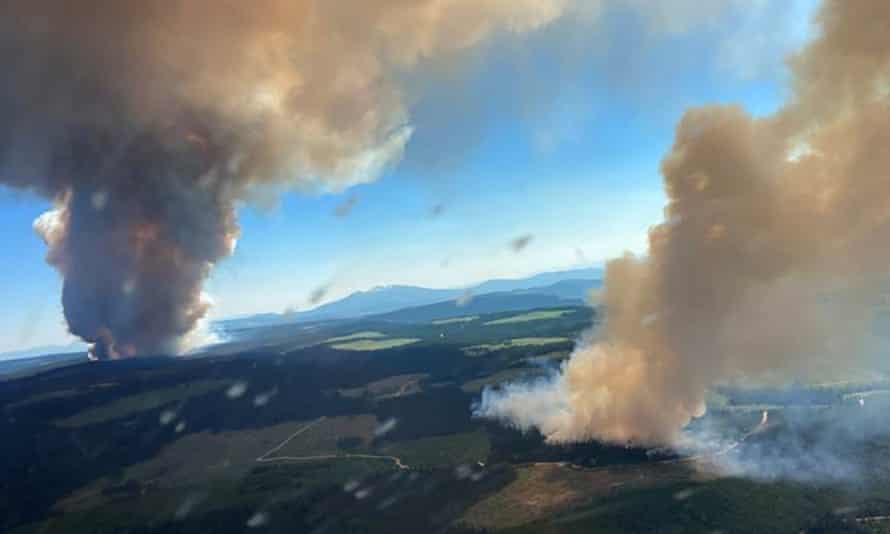The Guardian view on the heat dome: burning through the models
Politicians must respond to the latest warnings that climate science has underestimated risks

Last week’s shockingly high temperatures in the northwestern US and Canada were – and are – very frightening. Heat and the fires it caused killed hundreds of people, and are estimated to have killed a billion sea creatures. Daily temperature records were smashed by more than 5C (9F) in some places. In Lytton, British Columbia, the heat reached 49.6C (121F). The wildfires that consumed the town produced their own thunderstorms, alongside thousands of lightning strikes.
An initial study shows human activity made this heat dome – in which a ridge of high pressure acts as a lid preventing warm air from escaping – at least 150 times more likely. The World Weather Attribution Group of scientists, who use computer climate models to assess global heating trends and extreme weather, have warned that last week exceeded even their worst-case scenarios. While it has long been recognised that the climate system has thresholds or tipping points beyond which humans stand to lose control of what happens, scientists did not hide their alarm that an usually cool part of the Pacific northwest had been turned into a furnace. One climatologist said the prospect opened up by the heat dome “blows my mind”.
The disturbing signs of climate disruption are not limited to north America. Pakistan and Siberia have also had record-breaking high temperatures within the last few weeks, as have Moscow, Helsinki and Estonia. In Madagascar, the worst drought in 40 years has left a million people facing food shortages. The climate author David Wallace-Wells suggested that current conditions should be regarded as heralding a “permanent emergency”. With policymakers struggling to absorb the very serious implications for human societies of current models, it is frankly difficult to take in the suggestion that these models may underestimate the threat. The prospect of the jet stream becoming locked, and weather systems such as tropical storms ceasing to move in the way to which we are accustomed, carries nightmarish possibilities. More hot weather is on its way to California, with the bulk of the wildfire season ahead.
If there is anything positive to be taken from this new information, and reports of the suffering and destruction caused by the heat, it can only be that it intensifies the pressure on policymakers to act. On Wednesday, the Switzerland-based Financial Stability Board issued a warning in advance of a G20 meeting in Venice this weekend. It urged finance ministers and central banks to take more notice of “far-reaching” climate impacts. Just how far-reaching these impacts will be depends on decisions taken by governments in the next months and years. So far, binding commitments to make the cuts in carbon emissions that are needed to avoid temperature rises above 2C are notable by their absence. With every worrying piece of climate news, the stakes ahead of November’s Cop26 conference keep growing.
Environmentalists used to shake their heads when highly unusual weather was reported in terms that ignored climate change’s contribution. Now, thanks to attribution science, the link is firmly made. To avoid future heat domes, countries including the US and Canada must stop pumping so much energy into the climate system.